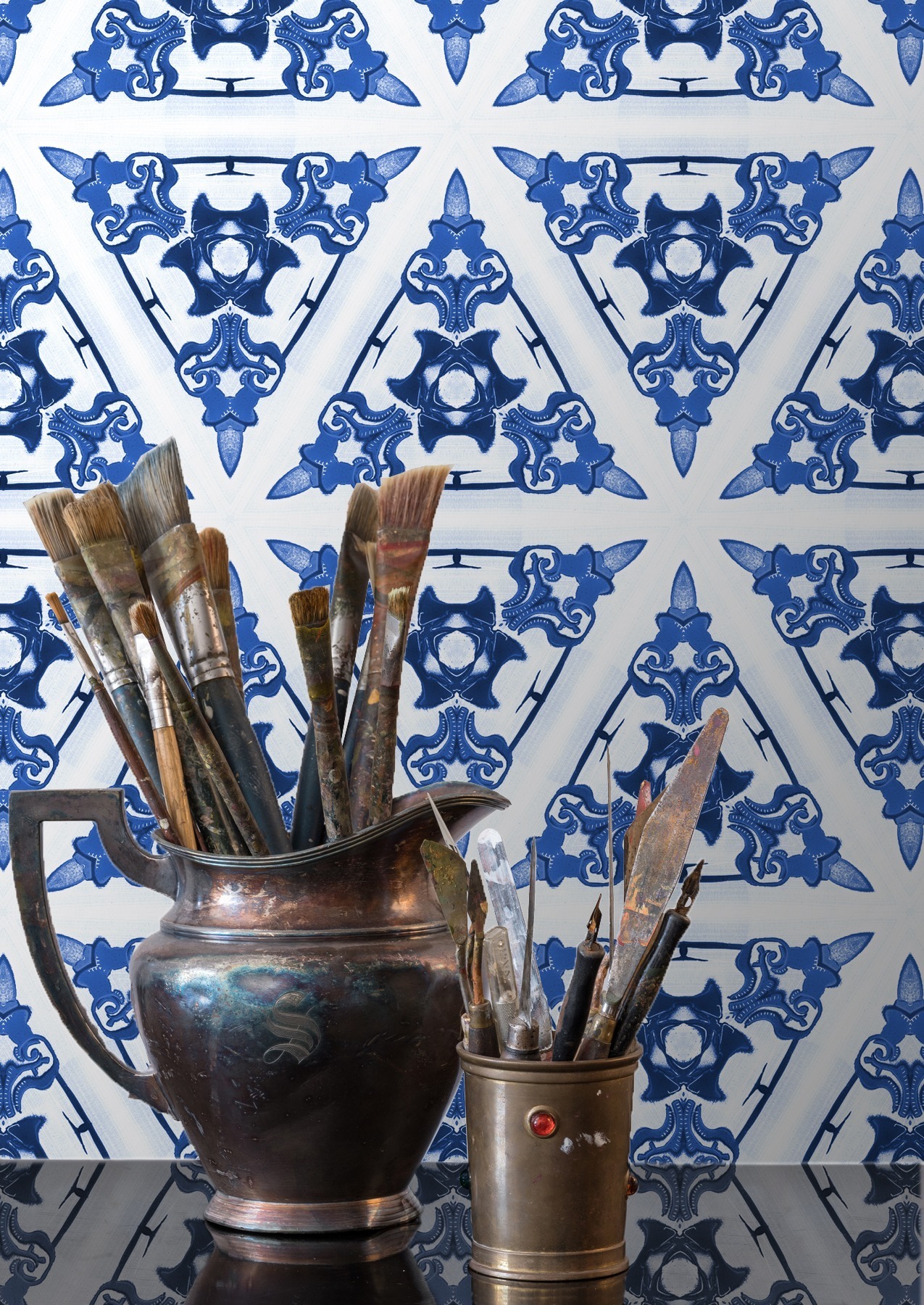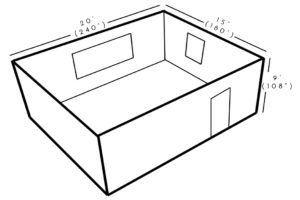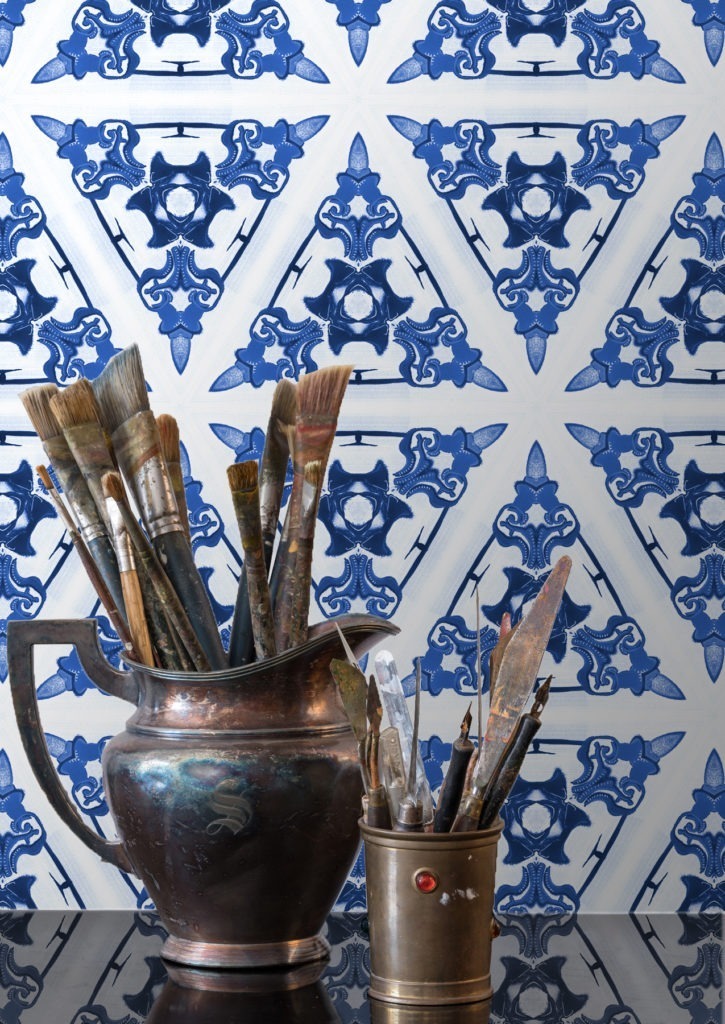
How to Easily and Reliably Estimate Wallpaper
~ How to Easily and Reliably Estimate Wallpaper ~
How much wallpaper do I need? That’s a great question! And it isn’t TOO hard to figure out.
One solid search on the internet for “wallpaper calculator” will turn up a bunch of results for automated engines that will crunch the numbers for you. How handy! Below, you’ll find our preferred calculator.
I’ll admit, though: I don’t always trust someone else’s code when I’m trying to figure out how much wallpaper I need for a project. I really prefer pencil, paper and a calculator, but that method isn’t the easiest. My advice is to use the calculator below, and then you’ll have all the info you need to double-check the result by hand (the instructions for which are below the calculator). Or even better, hire a professional to help you!
This wallpaper calculator estimates the amount of wallpaper required to cover a room or a wall. Pearl & Maude will not be responsible for overage or shortage based on these calculations. Different designs will require varying quantities depending on the match type and the size of the repeat pattern. Pearl & Maude does not quote quantities. We recommend you consult your decorator or wallpaper hanger before ordering.
If using this calculator, be certain to round up, order all of the wallpaper needed for a room at one time to assure color consistency, and order some extra should you need to make repairs to your papered walls.
Pearl & Maude indicates the repeat scale for every wallpaper pattern we offer. Enter the height repeat from the information we provide, into the Pattern Repeat box on the calculator. For any repeat wider than that width of the wallpaper roll, please seek the assistance of your designer.
Are yo looking for the easiest wallpaper to calculate for quantity? That would definitely be stripes. And the easiest wallpaper to install? Check out our Artisan Wallpaper line. It’s heavy weight and slides right into place on your pasted walls.
How do I calculate how much wallpaper I need?
All you need for your wallpaper calculator are basic data including:
- Room Dimensions: You need the usual width, length, and height of the room. If you have a room with a different shape other than the rectangular cuboid, you can solve the area of the shape and input this directly into the calculator.
- Doors and windows: You can either leave the default dimensions of doors and windows or customize them. Once you enter the dimensions into the wallpaper estimator, their areas are automatically calculated.
- Wallpaper dimensions and pattern repeat
How to use the wallpaper calculator?
This wallpaper calculator may look intimidating but it’s really easy to use. This online tool is also known as a wallpaper estimator and you can use it to help you determine how much wallpaper you need for your project.
- First, choose the Project Type from the drop-down menu. Enter the values of the Room Length, Room Width, and Room Height then choose the unit of measurement from the drop-down menu. You can also enter the Room Area and choose the unit of measurement from the drop-down menu.
- For the Doors, enter the values of the Door Height, Door Width, and Number of Doors or simply the Door Area and choose the unit of measurement from the drop-down menu.
- For the Windows, enter the values of the Window Height, Window Width, and Number of Windows or simply the Window Area and choose the unit of measurement from the drop-down menu.
- For the Wallpaper itself, enter the value of the Cost per Roll, Roll Length, Roll Width, and a value for Pattern Repeat if applicable.
- After entering all these values, the wallpaper estimator gives you the values for the Number of Wallpaper Rolls, the Adjusted Room Height, the Adjusted Room Area, the Number of Rolls, and the Total Cost.
Once you have gathered and typed in all these values, the wallpaper calculator with repeat solves the following for you: Adjusted Height, Adjusted Room Area, Number of Rolls, Total Cost
You now have all the information needed to double-check your results with hand calculation.
For most installations, calculating the amount of wallpaper needed is straight forward and easy! The benefit of this system over the calculator above, is that we do not account for windows and doors. This hand calculation generally allows for the right amount of excess paper for repairs and unforeseen hiccups.
Below, is how I measure for wallpaper. I will walk you through the steps for estimating how much wallpaper you need. Make sure to read through the whole article for additional information and tips.
Measure in inches, ignore trim, windows and doors – this will give you a little room for mistakes and waste
Measurements you will need:
- Height of each wall in inches
- Width of each wall in inches
- Vertical wallpaper repeat in inches (found in product listing)
- Width of wallpaper in inches (found in product listing)
Calculations:
- Divide the height of each wall by the height of the wallpaper repeat. Round fractions up. This will tell you the number of repeats needed for the height of the wall.
- Multiply the result of step 1 by the height of the wallpaper repeat. This will give you the length of each strip of wallpaper required to paper from floor to ceiling with enough room to match your repeat.
- Divide the result of step 2 by 12. Round fractions up. This will give you the length of each strip of wallpaper in feet.
- Divide the width of each wall by the width of the wallpaper. Round fractions up. This will give you the number of strips needed to paper each wall.
- Add up the number of strips needed for each wall in order to know how many total strips will be needed to paper the whole room.
- Multiply the length of each strip needed by the number of strips needed. This will give you the total wallpaper needed in feet.
- If you are ordering wallpaper by the yard, divide the result from step 5 by 3. Round fractions up. This will give you the total wallpaper needed in yards.
See below for an example of how to estimate the amount of wallpaper needed for a room.
Take into account how much extra wallpaper you should have on hand. At minimum, we recommend adding 10% for touch ups and mistakes. Consider buying an additional roll or yardage if one of your walls is a wet wall or has other factors which may require access in the future.
If your walls are different heights or you are papering staircases or vaulted ceilings, consult a professional paper hanger to review the location for your installation. Provide them with the sizes of wallpaper rolls available and the pattern repeat for the paper you will be using. This will allow them to estimate the number of rolls required for your job and determine which roll length will reduce the amount of waste and keep your costs down. Find a paperhanger in your area through the The Wallcovering Installers Association. You are also welcome to contact us. We are happy to help you work through your measurements.
Pearl and Maude wallpaper is made to order. It is important to order enough material for your installation from a single dye lot. We recommend confirming your measurements with a professional paperhanger before ordering.
Example:
For this example, we will measure how much Bunsen Blue White Standard Wallpaper we will need to paper a 20’ x 15’ room with 9’ ceilings.
Measurements:

- Height of each wall in inches = 108”
- Width of each wall in inches = 180” (x2) and 240” (x2)
- Vertical wallpaper repeat in inches = 14”
- Width of wallpaper in inches = 24”
Calculations:
Divide the height of each wall by the height of the wallpaper repeat. Round fractions up. This will tell you the number of repeats needed for the height of the wall.
108”/14” = 7.7 repeats; round up to 8 repeats
Multiply the result of step 1 by the height of the wallpaper repeat. This will give you the length of each strip of wallpaper required to paper each wall with enough room to match your repeat.
8 repeats x 14” = 112” long strips
Divide the result of step 1 by 12. Round fractions up. This will give you the length of each drop of wallpaper in feet.
112” / 12 = 9.33’; We currently offer wallpaper in 9′ and 12′ rolls. This application will use the 12′ rolls.
Divide the width of each wall by the width of the wallpaper. Round fractions up. This will give you the number of strips needed to paper each wall.
180”/24” = 7.5 widths; round up to 8 widths
240”/24” = 10 widths
Add up the number of strips needed for each wall in order to know how many total strips will be needed to paper the whole room.
8 widths x 2 short walls = 16 widths
10 widths x 2 long walls = 20 widths
16 widths + 20 widths = 36 widths
Divide this number by two – we sell wallpaper drops in sets of 2. This will give you the quantity of items you need to add to your cart.


Pingback: tips for estimating the amount of wallpaper needed for a room
July 6, 2024 3:58 am